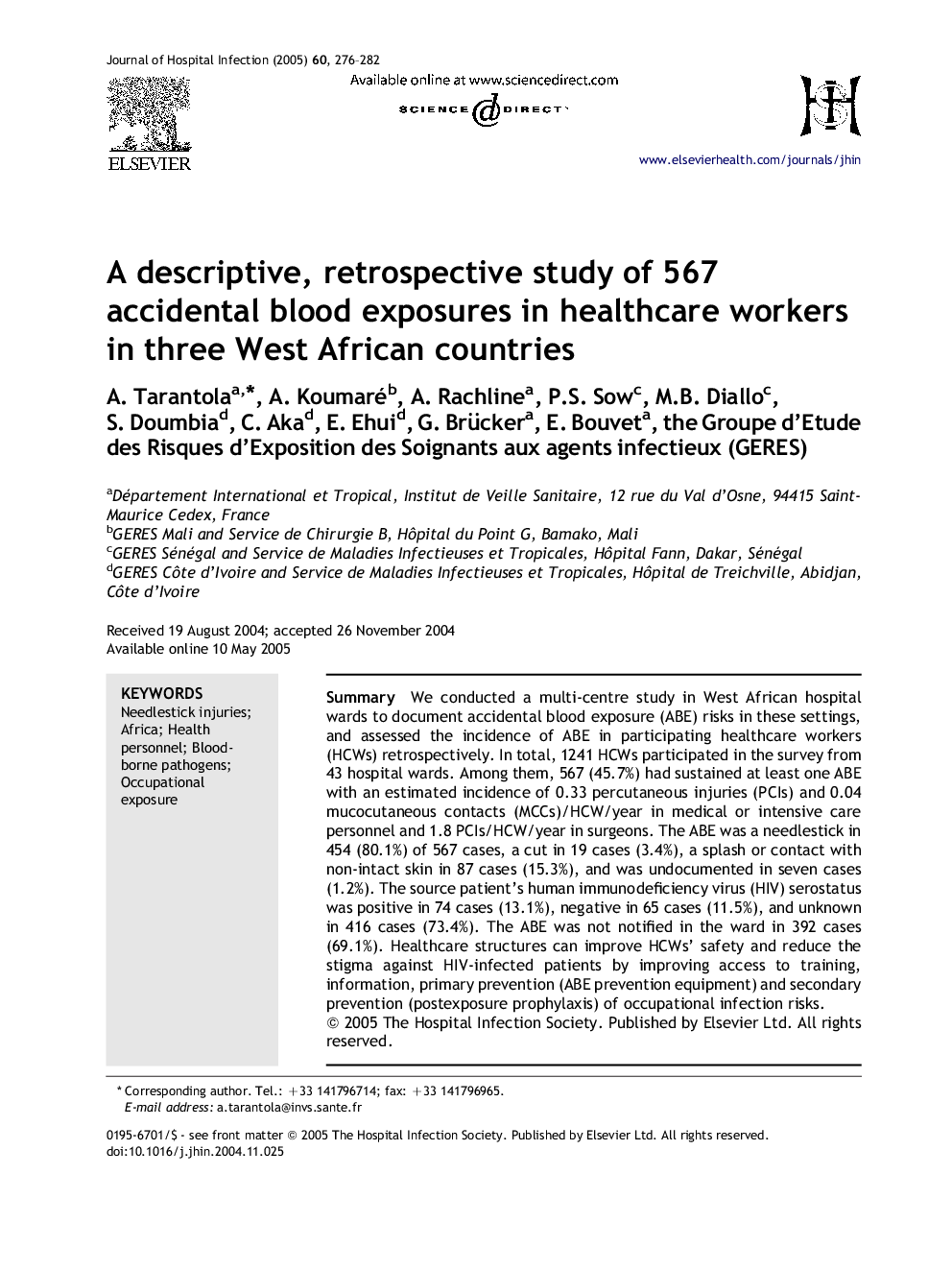| Article ID | Journal | Published Year | Pages | File Type |
|---|---|---|---|---|
| 9269308 | Journal of Hospital Infection | 2005 | 7 Pages |
Abstract
We conducted a multi-centre study in West African hospital wards to document accidental blood exposure (ABE) risks in these settings, and assessed the incidence of ABE in participating healthcare workers (HCWs) retrospectively. In total, 1241 HCWs participated in the survey from 43 hospital wards. Among them, 567 (45.7%) had sustained at least one ABE with an estimated incidence of 0.33 percutaneous injuries (PCIs) and 0.04 mucocutaneous contacts (MCCs)/HCW/year in medical or intensive care personnel and 1.8 PCIs/HCW/year in surgeons. The ABE was a needlestick in 454 (80.1%) of 567 cases, a cut in 19 cases (3.4%), a splash or contact with non-intact skin in 87 cases (15.3%), and was undocumented in seven cases (1.2%). The source patient's human immunodeficiency virus (HIV) serostatus was positive in 74 cases (13.1%), negative in 65 cases (11.5%), and unknown in 416 cases (73.4%). The ABE was not notified in the ward in 392 cases (69.1%). Healthcare structures can improve HCWs' safety and reduce the stigma against HIV-infected patients by improving access to training, information, primary prevention (ABE prevention equipment) and secondary prevention (postexposure prophylaxis) of occupational infection risks.
Related Topics
Life Sciences
Immunology and Microbiology
Applied Microbiology and Biotechnology
Authors
A. Tarantola, A. Koumaré, A. Rachline, P.S. Sow, M.B. Diallo, S. Doumbia, C. Aka, E. Ehui, G. Brücker, E. Bouvet,
